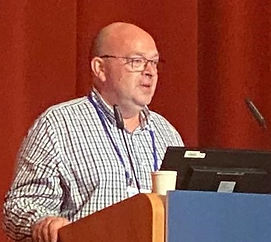
INTERNATIONAL

Project: Batteries fire safety – a sustainable problem approach
Introduction project
In order to meet the climate objectives, a real (r)evolution is taking place in the field of new energy sources and technological applications.
The purpose of this sustainable project harboured at the Łódź University of Technology in Poland, is to find an optimal extinguishing method for batteries modules, which allow to minimalize their accidental fire propagation and risk for involved people and first and second responders clothing, from the fire and toxic smoke influence.
Area of interest: energy storage/batteries applications
The project is focused on different extinguishing methods which could be applied in a case of fire in
a variety of applications from EV batteries (both in cars, busses and trucks) to large energy storage systems. The research will be concentrated on the fire extinguishing effectiveness and in consequence – limitation of the produced smoke toxicity. The smoke toxicity will be examined by its influence on the firefighters clothes contamination and its further decontamination possibility.
Problems we want to solve
-
Which available extinguishing systems (like sprinklers, water mist, F500, FirePro, etc.) are the most effective in the battery module fire spread control?
-
How the extinguishing can limit the battery fire smoke mass production and its toxicity?
-
How much of the toxic products could be cumulated on the first and second responders clothing?
-
How effective are the available first and second responders clothing decontamination methods (water vs CO2 cleaning)?
-
How to create an uniform standardised way for safety information concerning all kinds of vehicles/installations for first and second responders worldwide together with all the necessary stakeholders?
-
How to create procedures/recommendations to deal safely with batteries from manufacturing to disposal
How?
The problems to be solved will be addressed with small to full scale battery fire tests followed by an adequate analysis, laboratory testing, etc. as required. The obtained results will be analysed in detail in order to draw conclusions and translate them into specific solutions, guidelines and recommendations.
The team
The project was born in Poland, at Lodz University of Technology (LUT). The team is led by Dr hab inż. Dorota Brzezińska, Prof. of LUT.
Each team member has his specific area of expertise within this project:
- Dr hab. inż. Dorota Brzezińska: Ventilation and FSE;
- Natalia Kraus-Namroży: Fire Suppression and FSE;
- Ewelina Szmytke: PPE contamination, health and FSE;
- Kurt Vollmacher: Expert in New Technology/Procedures/Training and Education/Standardisation
Multistakeholder approach
This project will also involve collaboration with other universities and business partners (battery suppliers, extinguishing systems providers and decontamination service providers and other necessary stakeholders).
Its’ results will be implemented in both the scientific and practical aspects.
Dissemination of knowledge
The gained knowledge will be distributed through different channels such as:
- research journals;
- press articles;
- written guidelines and recommendations to the industry, emergency respondents, different authorities etc.;
- a book is to be created as a summary of the gathered knowledge;
- national and international conferences;
- dedicated trainings;
- any other means such as social media posts, YouTube podcasts etc.
FIRE TESTS 1st STAGE - Fire tests in Szczyrzyc, POLAND
The first stage of the project was carried out on 15th-17th March 2023 in Szczyrzyc, Poland by representatives of Lodz University of Technology and SUPO Cerber Company (designer and manufacturer of extinguishing systems).
-
Fire tests included sets of 20 battery cells ignited by a gas burner in different scenarios in terms of extinguishing (no extinguishing, extinguished with water mist, water mist + F500 additive, water mist + Orchidee additive).
-
Multilayer samples of firefighters PPE material was contaminated in each tests for further comparison of fire residues in the structure of the material + cleaning effectiveness (water vs PCO2)
-
Temp., air velocity and humidity was tracked during all tests.
-
Further test are planned in a bigger scale
Project
I have helped 4 students with their project for the Lodz University of Technology
They have used my idea of an "Ideal Battery Energy Storage System" as working item" for their project.
Related articles from other tests














